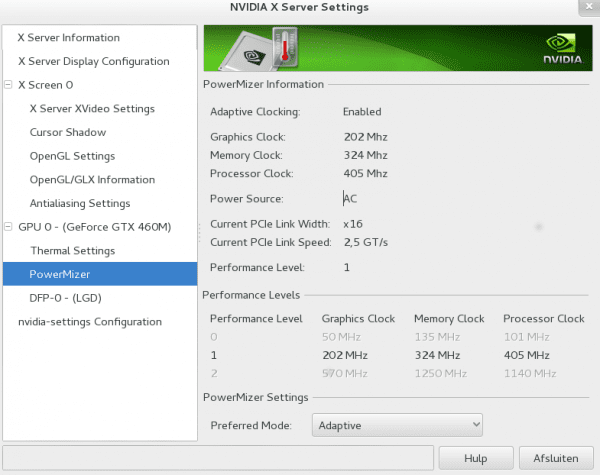

Windows System on a Chip (SoC)–based devices behave like consumer devices and mobile phones that is, they turn on immediately when they are needed, thereby saving energy.įor info on requirements that hardware devices must meet when they implement this feature, refer to the relevant WHCK documentation on Device.Graphics…RuntimePowerMgmt.Mobile form factor devices can go into an idle state and save power because individual system components shut down if they are not in use.These are the key power management scenarios to reduce power consumption and extend battery life: GPUs and display screens are two of the largest power consumers in laptops, mobile devices, and desktop PCs. However, if you bring down the drop-box you will find there is an Adaptive setting and a Prefer Maximum Performance setting you can optionally choose. As you can see it shows the core running at 1230Mhz with 95 and the temps down at 53C. Sorry I dont have AMD settings, but Im sure there are equivalent settings out there to translate if you dig hard enough. Normally I would see the GPU Core clock speed at 1980 Mhz all the time and the GPU Core around 80-85 & temps about 70C in that type of scenery. By default, this option is set to Optimal Power. One other thing these settings are in order from top to bottom in the NVIDIA Control Panel under Manage 3d Settings. If youre OCing your GPU and power isnt a concern then it should be.
#Nvidia settings power management mode driver#
These new and updated functions and structures are available starting with Windows 8 for the display miniport driver to transition the state of power components and to communicate power events with the Microsoft DirectX graphics kernel subsystem. Scroll down to the bottom and you will find the Power Management Mode option. Maximum Performance basically means itll never downclock and run in a energy saving state. WHCK requirements and tests: Device.Graphics…RuntimePowerMgmt GPU power management device driver interface (DDI) This infrastructure provides a standardized mechanism to support F-state and P-state power management in collaboration with Windows. By default all apps are set to power saving mode, however.

#Nvidia settings power management mode how to#
Starting with Windows 8, an optional GPU power management infrastructure is available that lets Windows Display Driver Model (WDDM) 1.2 and later drivers manage power for individual devices or a set of devices. Learn how to change the default settings that apps use when utilizing your GPU on Windows 11.


 0 kommentar(er)
0 kommentar(er)
